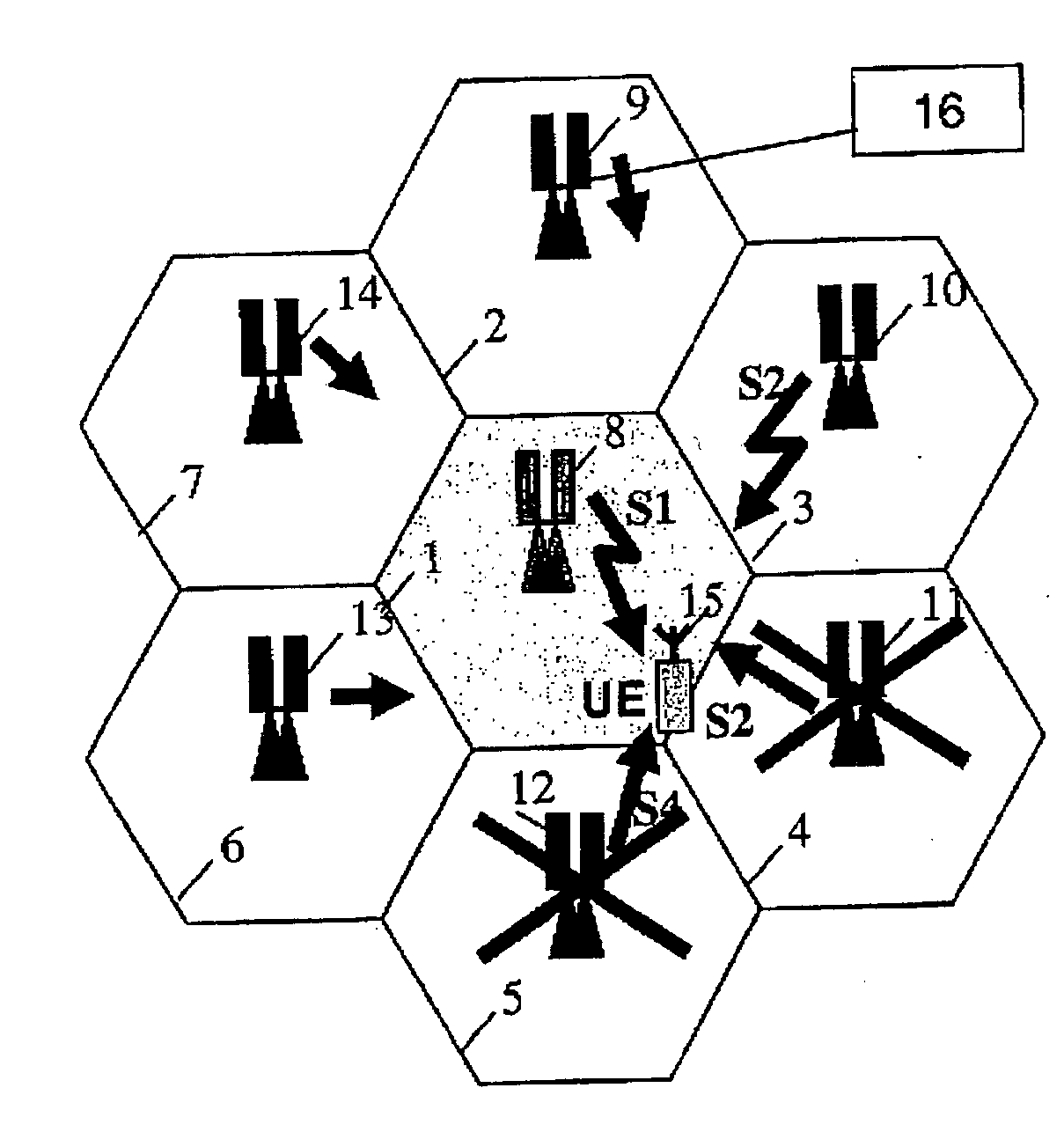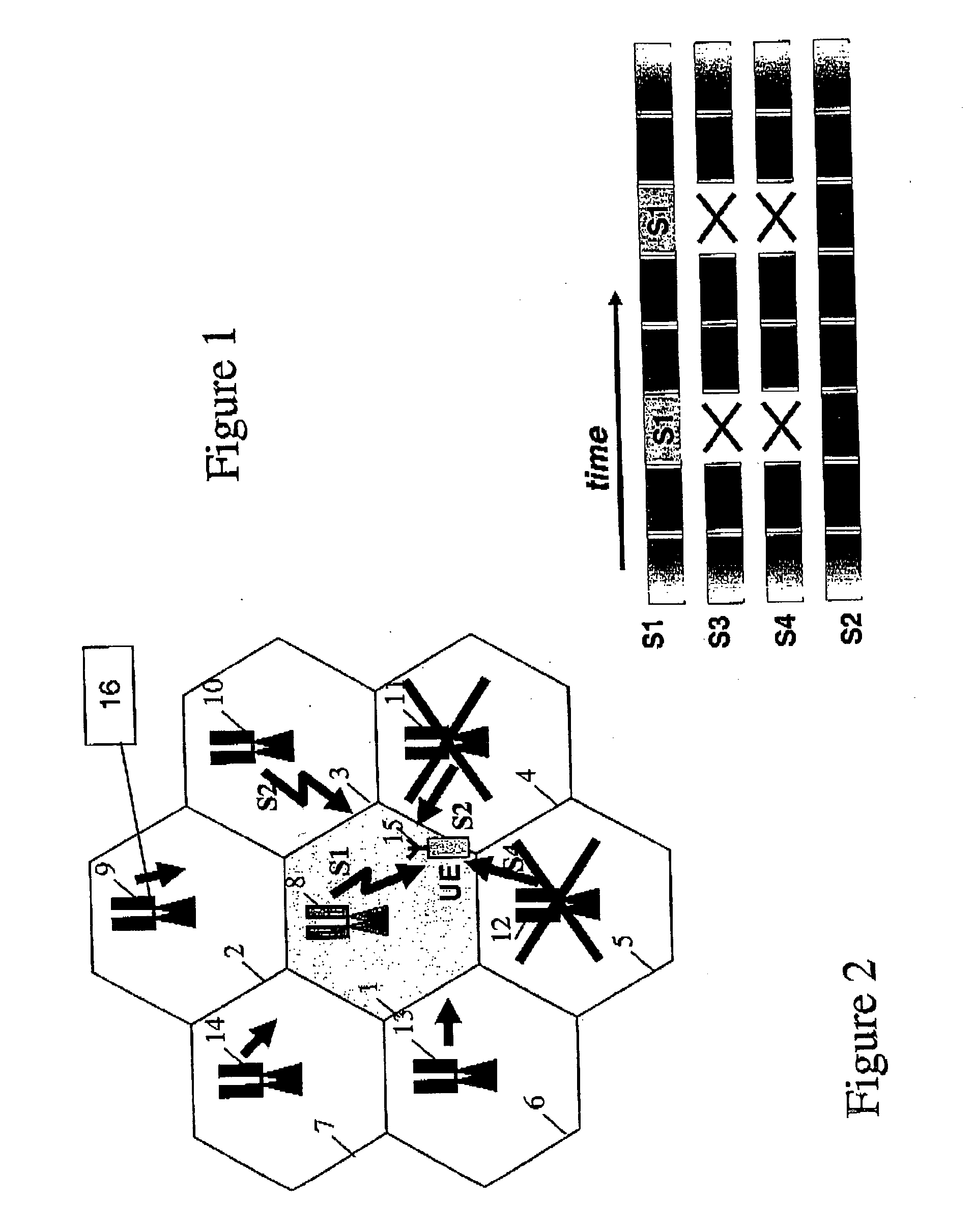Method and apparatus for improving a transmission signal characteristic of a downlink signal in a time division multiple access wireless communication system
a wireless communication system and transmission signal technology, applied in multiplex communication, data switching networks, high-level techniques, etc., can solve the problem of not being able to provide the same level and type of services, broadband data services, user equipment, etc., and achieve the effect of improving the signal characteristic of the downlink signal received
- Summary
- Abstract
- Description
- Claims
- Application Information
AI Technical Summary
Benefits of technology
Problems solved by technology
Method used
Image
Examples
Embodiment Construction
[0021] The best mode of the invention will now be described with reference to the accompanying figures.
[0022] FIG. 1 is a schematic representation of a cellular wireless communications network. The network comprises a plurality of contiguous cells 1 to 7, each cell being served by a respective base station 8 to 14 which each comprise a downlink signal source for user equipments 15 located in their respective cells. For ease of convenience, the cells 1 to 7 are schematically represented as being hexagonal in coverage area and only one user equipment is shown as being located towards an edge of the cell denoted 1 adjacent to the cell denoted as 4. It will be understood that each cell will be occupied by a plurality of user equipments and that the downlink signals transmitted by the various base stations 8 to 14 do not abruptly end at the boundaries of the cells but that such signals may be received by a user equipment located in a different cell.
[0023] The user equipment (UE) 15 depic...
PUM
 Login to View More
Login to View More Abstract
Description
Claims
Application Information
 Login to View More
Login to View More - R&D
- Intellectual Property
- Life Sciences
- Materials
- Tech Scout
- Unparalleled Data Quality
- Higher Quality Content
- 60% Fewer Hallucinations
Browse by: Latest US Patents, China's latest patents, Technical Efficacy Thesaurus, Application Domain, Technology Topic, Popular Technical Reports.
© 2025 PatSnap. All rights reserved.Legal|Privacy policy|Modern Slavery Act Transparency Statement|Sitemap|About US| Contact US: help@patsnap.com


